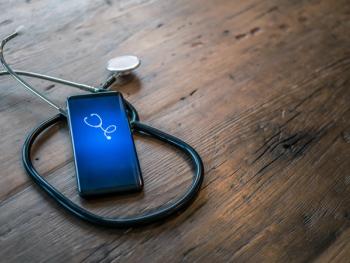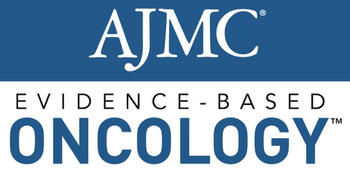
Technology
Latest News
Latest Videos

CME Content
More News

Older age and low literacy were not barriers to self-monitoring and reporting disease activity.

A survey of health care leaders presented during the HIMSS Global Health Conference & Exhibition found most weren’t very satisfied with the technology they are offering patients.

This 4-day event drew thousands of health care leaders to Nashville, Tennessee; in this column, Ron Southwick, editor of Chief Healthcare Executive, shares his thoughts from conversations and panels in Music City.

This study investigated potential benefits of a virtual education intervention for atopic dermatitis that targeted Hispanic Americans and Spanish-speaking populations.

In this interview from the Association of Community Cancer Centers (ACCC) 2023 Annual Meeting and Cancer Center Business Summit, Olalekan Ajayi, PharmD, MBA, ACCC president, addresses the use of artificial intelligence (AI) in health care equity and why data integrity is just as important as the models used with the data.

Samyukta Mullangi, MD, MBA, oncology fellow at Memorial Sloan Kettering Cancer Center and incoming medical director at Thyme Care, spoke on how her organization’s tech platform incorporates social determinants of health (SDOH) in care navigation to ensure high quality care and treatment.

Digital health data can facilitate the participation of underrepresented and diverse patient populations in clinical trials, but first the FDA must build its capability to evaluate such information in its regulatory processes for new drug development.

Dermatology lends itself well to telemedicine, particularly as a screening tool to reduce wait times and increase access to care for patients with high-risk melanoma, said Erik Jaklitsch, second-year medical student at the University of Pittsburgh.

A recent study found that chatbot systems that used artificial intelligence (AI) could be valuable in providing access to current, accurate, and complete information about infectious diseases and vaccines against them.

Speakers at the American Academy of Dermatology 2023 Annual Meeting highlighted the potential of DataDerm to tell the story of dermatological care in the United States, but some also cautioned that the registry only reflects those who have access to care in the first place.

The device, PEP Buddy improves breathlessness symptoms and quality of life in patients with chronic obstructive pulmonary disease (COPD), as well as people who have anxiety and stress.

In this new analysis, investigators found significant agreement between in-person and remote assessments.

As scientists are identifying molecular alterations in patients with later-stage cancers that may be targets in earlier-stage disease, next-generation sequencing is being utilized more in the first-line setting, noted Sigrun Hallmeyer, MD, medical oncologist with Advocate Health.

Kevin Davies, PhD, executive editor, The CRISPR Journal and GEN Biotechnology, discusses how CRISPR has evolved from the initial discovery of the double helix to now, with the technology holding great promise for both genetic diseases and cancers.

The growth in telehealth utilization continued an increase begun in November 2022.

A feasibility study shows many providers intended to continue using the tool, although some said they did not have sufficient time or did not need the tool.

Olalekan Ajayi, PharmD, MBA, chief operating officer of Highlands Oncology Group, PA, and 2023-2024 president-elect of the Association of Community Cancer Centers (ACCC), discusses why he is excited for this year’s meeting, including its many workshops and day 1 keynote on CRISPR.

Carolina Blood and Cancer Care Associates’ No One Left Alone initiative works to dismantle cancer health disparities and increase health care equity among its rural patient population. Sashi Naidu, MD, director of research, discusses delivering next-generation sequencing testing to patients.

The researchers used Paraphase on more than 400 samples of spinal muscular atrophy (SMA) comprising 5 ethnicities.

A diagnostic algorithm was evaluated for its ability to gauge the presence of asthma or chronic obstructive pulmonary disease (COPD), in a new analysis.

Having a diagnostic model that leverages artificial intelligence could fill a gap in the pulmonary hypertension (PH) diagnostic pathway, as there are currently just 2 validated screening algorithms for PH.


Utilizing real-world evidence that applies to the specific care needs of certain patient populations can promote timely decision-making among payers and providers on the use of effective cancer therapies available on the market, said panelists at the 2022 Patient-Centered Oncology Care® (PCOC) meeting.

Patients with heart failure and high comorbidity burdens who received postdischarge noninvasive telemonitoring and nurse telephone coaching showed better survival outcomes than those who received standard care.

This agreement enables the integration of data from Dexcom’s continuous glucose monitor (CGM) directly into DarioHealth's metabolic digital health tool, adding another layer of support.























































